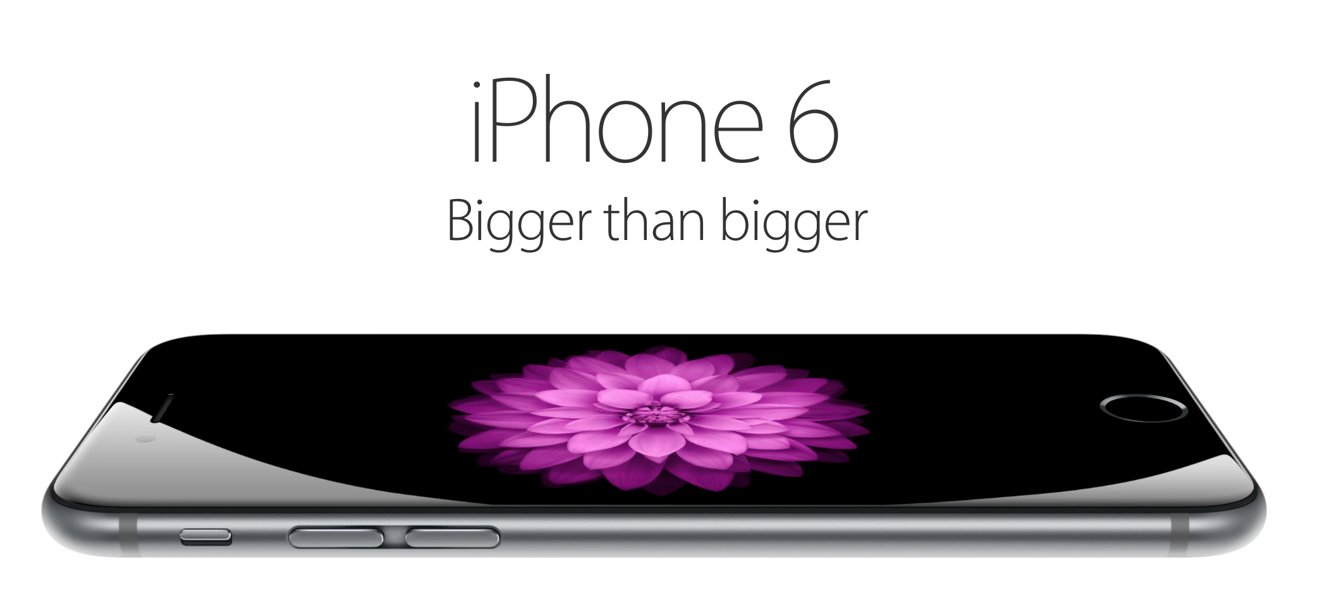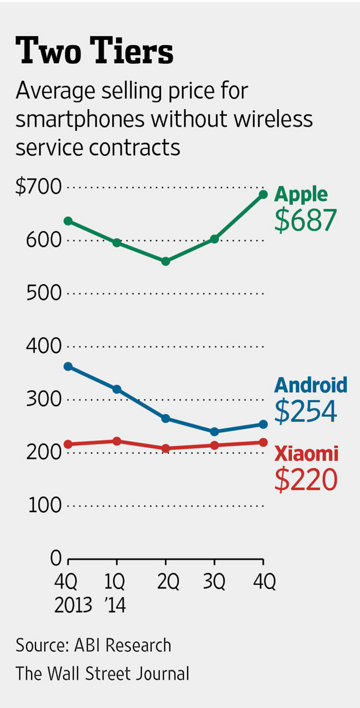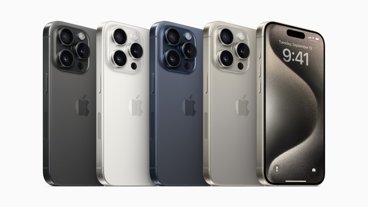While Apple's average iPhone price surges to $687, Android devices flounder at $254
Highlighting the huge disparity between the iPhone and the rest of the mobile market, the average selling price of Apple's smartphone lineup is now 2.7 times that of devices running Android.
Propelled by the $100 premium for the larger iPhone 6 Plus, as well as the upsell incentives of higher capacity 64- and 128-gigabyte models, the average selling price of the iPhone surged to $687 last quarter.
In contrast, new data from ABI Research and The Wall Street Journal shows that the average selling price of Android devices last quarter was just $254. In fact, over the last year, Android's average selling price has fallen by more than $100.
Android's freefall helps showcase how its leading manufacturer, Samsung, saw its profits plunge 64.2 percent last quarter. In particular, Samsung's premium-priced handsets in its Galaxy series were decimated by Apple's larger iPhone 6 and iPhone 6 Plus models, which debuted last fall.
Leading the way at the low end of the market has not been Samsung, but instead Chinese electronics maker Xiaomi, which had an estimated average selling price of $220 for its handsets last quarter.
Apple, meanwhile, has been steadily increasing the average selling price of the iPhone while the rest of the smartphone market struggles. The $687 average price achieved last quarter was up considerably from the sub-$600 ASP achieved in the third quarter of fiscal 2014, according to ABI Research.
Things were even worse for Microsoft, whose handset division had an average selling price of just $45 last quarter.
Apple's blockbuster holiday quarter, in which it sold a record smashing 74.5 million iPhones on its way to $18 billion in profit, flew in the face of some market watchers who have claimed for years that the company should compete with low-cost Android devices to gain market share. But Apple has long established itself as a luxury brand, eschewing market share in favor of high margins on premium products that customers desire.
 Neil Hughes
Neil Hughes












 Malcolm Owen
Malcolm Owen
 Chip Loder
Chip Loder

 William Gallagher
William Gallagher
 Christine McKee
Christine McKee
 Michael Stroup
Michael Stroup
 William Gallagher and Mike Wuerthele
William Gallagher and Mike Wuerthele







